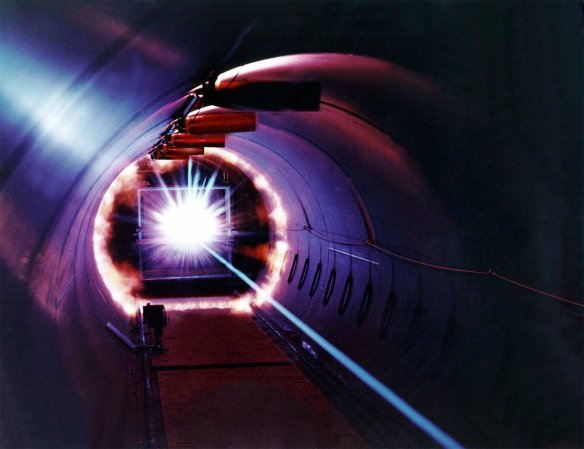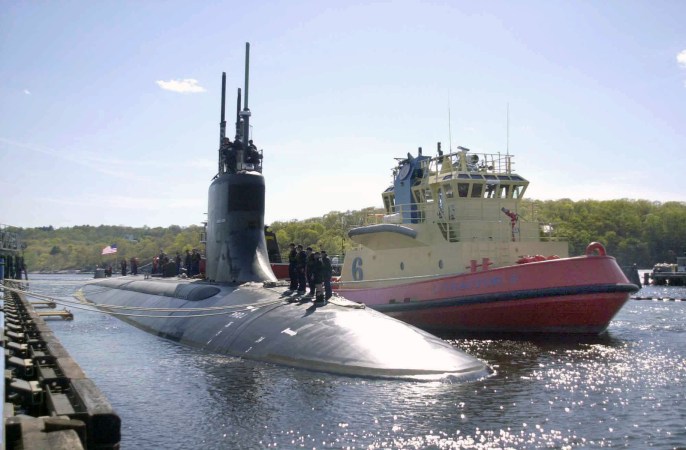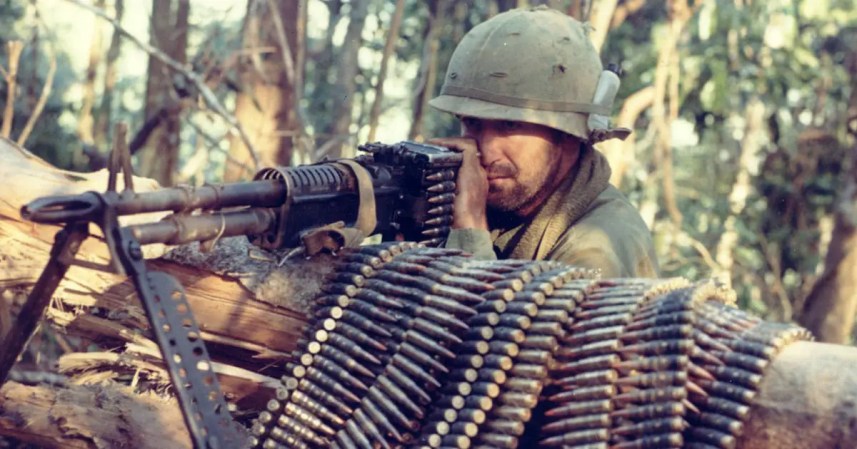Thirty-three years ago, the Star Wars program was easily the most elaborate and complex defense system ever conceived.
“I call upon the scientific community in our country, those who gave us nuclear weapons, to turn their great talents now to the cause of mankind and world peace, to give us the means of rendering these nuclear weapons impotent and obsolete,” President Ronald Reagan said on March 23, 1983. The speech announced the creation of a new missile defense called the Strategic Defense Initiative (SDI), which quickly became known as Star Wars.
It envisaged a vast network of laser-armed satellites, air-based missiles, and ground-based interceptors missiles and electromagnetic railguns. These would be used to intercept incoming nuclear intercontinental ballistic missiles from the Soviet Union and other enemies, all coordinated through advanced sensors linked to supercomputers, and protect the United States from direct nuclear attack. By being able to neutralize at least most of the incoming nuclear warheads, the U.S. hoped to show the Soviet Union that any potential nuclear confrontation was hopeless.

The United States and the Soviet Union had flirted with anti-ballistic missile systems in the past.
The U.S. developed the Nike Zeus series of missiles in the early 1960s, which had some ABM capability, and the Soviet Union installed similar missiles around Moscow as protection against limited nuclear strikes. Neither could begin to effectively cope with large-scale nuclear attacks, and the Anti-Ballistic Missile treaty of 1972 strictly limited the number of missile interceptors allowed. The U.S. closed its only missile defense system, called Safeguard, in 1976 after it had only been in operation for a few months and at enormous expense. But by the early 1980s, concerned with advancements in Soviet missiles, the Pentagon’s Joint Chiefs of Staff revisited the idea, and presented it to Reagan. The idea of a defensive measure to nuclear war beyond simply building more nuclear warheads appealed to to the president.
The technical hurdles for a defense shield like Reagan proposed would be on a scale exceeding any defense project attempted before. The majority of the technology involved, such as weaponized lasers and electromagnetic railguns firing projectiles at extremely high speeds, did not even exist yet and might not be developed for decades. It entailed hundreds, if not thousands of advanced satellites and radars to even begin to aim all the weapons required to make a dent in the Soviet’s vast arsenal. Reagan himself admitted that SDI could easily take until the end of the century to be put into place.
The skepticism towards the program was intense from the beginning. Besides the clear violations of the ABM treaty such a system would represent, it would also extend the arms race even deeper into space.
Swarms of hunter-killer satellites and space-based lasers would be a frightening new frontier, and the Soviet Union would almost certainly try to respond in kind. The projected costs of the system ran into the hundreds of billions of dollars, and the inevitable cost overruns would balloon the Star Wars program to a huge percentage of the U.S. military budget. In the event of an a nuclear attack, unproven technology would have be coordinated on an unprecedented scale and work perfectly the first time. The hurdles involved were well-nigh insurmountable. Nevertheless, by 1987 more than $3 billion was being appropriated annually by Congress to start developing the technology, roughly $6.5 billion in today’s dollars.

There has been much debate about what sort of affect the Star Wars program had running up to the end of the Cold War, but there is little doubt that the Soviet Union took the program very seriously, and were genuinely concerned about an expanded arm’s race which had immense costs they could not begin to afford. But by the end of the Cold War, a missile-defense system on the scale of SDI was still a pipe-dream. In 1991, with the collapse of the Soviet Union, the idea was scaled back to a much more limited system capable of defending against small-scale strikes.
The simple fact was that the program was never going to be feasible against as many weapons as an opponent like the Soviet Union could put into play. By 1986 the Soviet’s had over 40,000 nuclear warheads stockpiled, including nearly a thousand ICBM’s with up to 10 warheads a piece that could shower and overwhelm any target within 30 minutes of launch. Soviet submarine’s armed with nuclear missiles could get close enough to U.S. coasts that their payloads could strike hundreds of targets faster than any conceivable system could detect and intercept them. Even if SDI could stop 90 percent of the Soviet’s warheads, the 10 percent that made it through would leave the United States in radioactive ruin.
Though scaled back, development on weapons envisaged in Star Wars continued throughout the 1990s. Its legacy can be seen in today’s Missile Defense Agency. The MDA has cost more than $100 billion since 2002, and the test results of its missile interceptors have been decidedly mixed.
After more than three decades of advances in technology, however more modest our nuclear defense program is now, it still might not be any more realistic than its Cold War forebears.


















